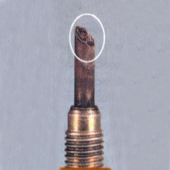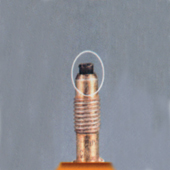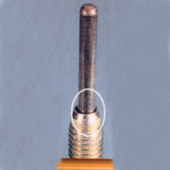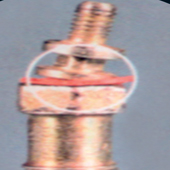Search Suggestions
Categories
Products
View All Results
Search Suggestions
Categories
Products
View All Results
In diesel engines, metal or ceramic glow plugs play a crucial role in the engine starting process, ensuring efficient combustion and optimal engine performance. Understanding what glow plugs are, how they function, and recognising signs they need replacing is useful knowledge for any diesel vehicle owner.
Our Glow Plug Guide provides comprehensive information for diesel vehicle owners. It outlines the significance of glow plugs in diesel engines, detailing their types, functions, and the number of plugs typically found in vehicles. The guide also discusses signs indicating the need for glow plug replacement and offers fault-finding techniques. It covers a range of potential issues, such as damaged or missing probes, and provides corresponding solutions.
Additionally, step-by-step instructions for changing glow plugs are included, ensuring owners can address issues efficiently.
Glow plugs are found in diesel engines. Unlike spark plugs in petrol engines, glow plugs aid in the combustion process by generating heat within the combustion chamber. Typically installed in the cylinder head, these plugs serve a vital function, especially in cold weather conditions where diesel fuel tends to gel.
Each type of glow plug has its specific advantages and is selected based on the requirements of the engine, the ambient conditions, and the desired performance characteristics. Modern diesel engines often use advanced glow plugs like ceramic or pressure sensor types to meet higher efficiency and emission standards.
The fundamental function of a glow plug is to preheat the air within the combustion chamber before starting the engine. When the ignition is turned on, an electrical current flows through the glow plug, causing it to heat up. This heat, in turn, warms the surrounding air and the diesel fuel, promoting easier ignition when the engine is cranked. Once the engine reaches a certain temperature, the glow plugs switch off, and the combustion process continues through the engine's normal operation.
The number of glow plugs in a vehicle will depend on the type of engine. In most diesel vehicles, there will be one glow plug per cylinder, but this will vary depending on engine design and quality, and manufacturer. This information will be outlined in the owner’s manual.
Like any component, glow plugs are subject to wear and tear over time. Noticing signs that show when a replacement is needed can prevent unexpected problems and damage to your diesel engine.
If your diesel engine takes longer to start, it could be an indication that the glow plugs are not providing sufficient heat. This is often more noticeable in colder weather when the engine requires additional assistance in achieving optimal combustion temperatures.
Faulty glow plugs can lead to uneven combustion, resulting in a rough idle. If you notice increased vibrations or a shaky engine when idling, we recommend checking the glow plugs.
A diesel engine emitting excessive smoke during startup or under normal use may be a sign of inefficient combustion. Faulty glow plugs can contribute to incomplete combustion, leading to the production of more smoke than usual.
Diminished fuel efficiency is often linked to suboptimal combustion. If your diesel vehicle starts to have reduced miles per gallon, it could be a sign of glow plug issues.
Modern diesel engines are equipped with onboard diagnostic systems that can detect issues with various components, including glow plugs. If the engine management light illuminates on your dashboard, it's advisable to have your vehicle inspected, as it may signal a problem with the glow plugs.
Glow plug fault finding
Identifying the root cause of glow plug issues involves a systematic approach to fault-finding. Here are some steps to help diagnose potential problems:
Modern diesel vehicles are equipped with onboard diagnostic systems that can provide error codes related to the glow plug system. Use a diagnostic tool to retrieve these codes and pinpoint the specific issue.
Inspect the glow plugs visually for any signs of physical damage or excessive wear. A damaged glow plug may not function correctly, affecting the overall performance of the engine.
Using a multimeter, measure the resistance of each glow plug. A significant deviation from the specified resistance values could indicate a faulty plug. It is important to compare the measured resistance with the manufacturer's specifications for the glow plugs to determine if they are within the acceptable range. If the resistance values deviate significantly, it may be necessary to replace the faulty plug to restore optimal engine performance.
Check the voltage supply to the glow plugs during the preheating phase to ensure optimal heating for smooth starting. Insufficient voltage can cause inadequate heating, which may result in difficulties when starting the engine.
Inspect the wiring and connections related to the glow plug system. Corroded or damaged wiring can disrupt the electrical flow and impact the efficiency of the glow plugs.
Here are some potential problem causes and solutions; thanks to ignition experts Denso for the photos:

Potential Causes:
Remedial Actions:

Potential Causes:
Remedial Actions:

Potential Causes:
Remedial Actions:

Potential Causes
Remedial Actions:

Potential Causes
Remedial Actions:

Potential Causes
Remedial Actions:

Potential Causes
Remedial Actions:

Potential Causes
Remedial Actions:

Potential Causes
Remedial Actions:

Potential Causes
Remedial Actions:
If you've found a glow plug issue and need to replace it, follow these steps:
Before starting, make sure you have all the necessary tools, replacement glow plugs, and any additional components required for your particular vehicle model.
Identify the location of the glow plugs on your engine. Consult your vehicle's manual if necessary for guidance on their exact placement.
Using the appropriate tools, carefully remove the old glow plugs. Exercise caution to avoid damaging surrounding components.
Before installing the new glow plugs, clean the plug holes to ensure a proper fit. Use a suitable cleaning tool or compressed air to remove any debris.
Carefully insert the new glow plugs into their respective holes, ensuring they are securely seated. Tighten them to the manufacturer's specified torque settings.
Start the engine to ensure the new glow plugs are functioning correctly. Monitor for any warning lights or unusual engine behaviour.
Take your vehicle for a test drive to confirm that the glow plug replacement has resolved any starting or performance issues.
Glow plugs generally last for around 80,000 to 100,000 miles. However, this will vary depending on driving style, quality of the product, and how they have been fitted.
Investing in high-quality glow plugs is key for optimal engine performance. Quality plugs ensure efficient combustion, reliable starts, and prolonged engine life. Choosing reputable brands and durable materials for glow plugs pays off in improved overall vehicle reliability and reduced maintenance costs.
Well-maintained glow plugs contribute to complete combustion, enhancing fuel efficiency and reducing emissions. Keeping an eye on the condition of your glow plugs translates to a greener and more economical driving experience.
While lifespan varies, proactive replacement before signs of wear ensures uninterrupted engine performance. Regular checks and adherence to manufacturer recommendations contribute to maximising the glow plugs' service life.
In a DIY glow plug test, you can use a multimeter to check the resistance of each glow plug. This can help you determine if any of them are faulty and in need of replacement. Regular testing and maintenance can help keep your engine running smoothly and efficiently.
If you need new glow plugs for your car, we can help! Use our spark plug and glow plug lookup tool to find the right glow plugs for your car.
If you have questions or would like some advice, get in touch with our technical experts via phone, email or chat.